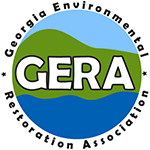
Mitigation banking has the potential to play a significant role in the Section 404 regulatory program by reducing uncertainty and delays, as well as improving the success of wetlands mitigation efforts. Land owners needing to “mitigate” or compensate for authorized impacts to waters of the US (including wetlands) associated with development activities may have the option of purchasing credits from an approved mitigation bank rather than restoring or creating waters of the US (including wetlands) on or near the development site. When permitted impacts are located within the service area of an approved mitigation bank, and the bank has the appropriate number and resource type of credits available, the permittee’s compensatory mitigation requirements may be met by securing those credits from the sponsor.
A mitigation bank is a site where resources (e.g., wetlands, streams, riparian areas) are restored, established, enhanced, and/or preserved for the purpose of providing compensatory mitigation for impacts authorized by Department of the Army permits. A mitigation bank may be created when a government agency, a corporation, or a nonprofit organization undertakes such activities under a formal agreement with a regulatory agency. The value of a mitigation bank’s resources is measured in credits, which are units of measure representing the attainment of aquatic functions at the mitigation bank site. The measure of aquatic functions is based on the resources restored, established, enhanced, or preserved.
